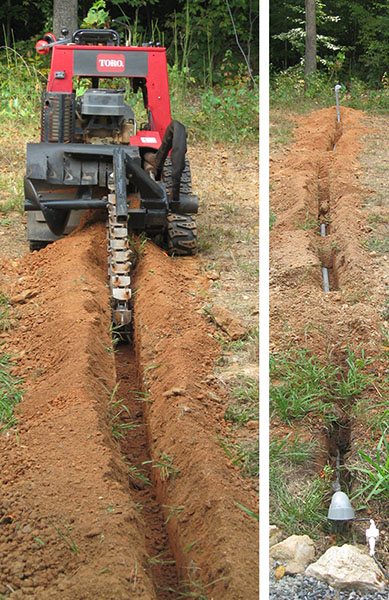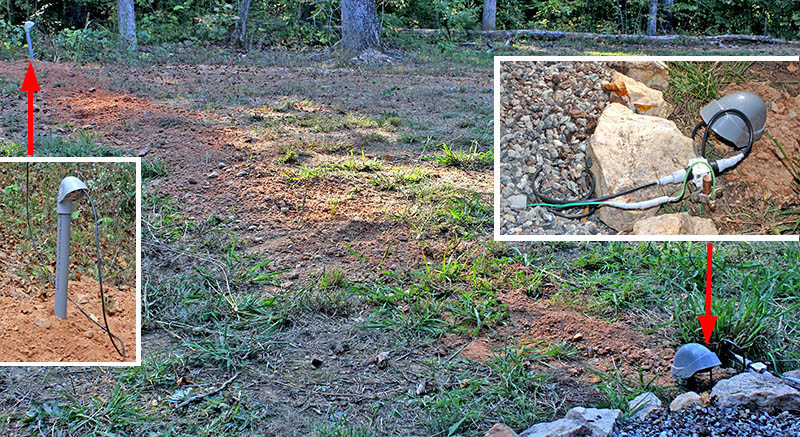After nine months with the coax feedline running across the ground (and being in the way when mowing grass), I rented a trenching machine and dug a 12" deep trench 32' from the house to the antenna.
All went well, and I laid 1¼" PVC conduit in the trench and pulled the coax through. Surprisingly, the cable was six feet too short. It sure looked plenty long enough when it was lying on the ground! It's long enough to make the connections, but there is no slack for service loops and antenna movement from blowing trees. I made an 8' extension cable to splice inside the conduit, instead of buying 60' of new coax.

This morning I installed the extension coaxial cable between the lightning arrestor and the feedline. I waterproofed the fittings, then – to take advantage of the longer coax – I raised the antena about five feet. Even with the additional height, there is sufficient slack cable to allow the antenna to move up and down on windy days.
I had a 6' length of 1¼" conduit left from the main run to the antenna, so I fed the coax and ground wire to the shack through it, and buried the conduit in the gravel that surrounds our house.
The final step was to use the tractor with rear blade to backfill the trench. This photo shows the backfilled trench from the house to the antenna. The inset on the left is a closeup of the service head beneath the antenna, and on the right is the service head near the house, with the lightning arrestor on the ground rod, and the coax and ground wire entering the conduit buried in the gravel.

Updated April 18, 2025